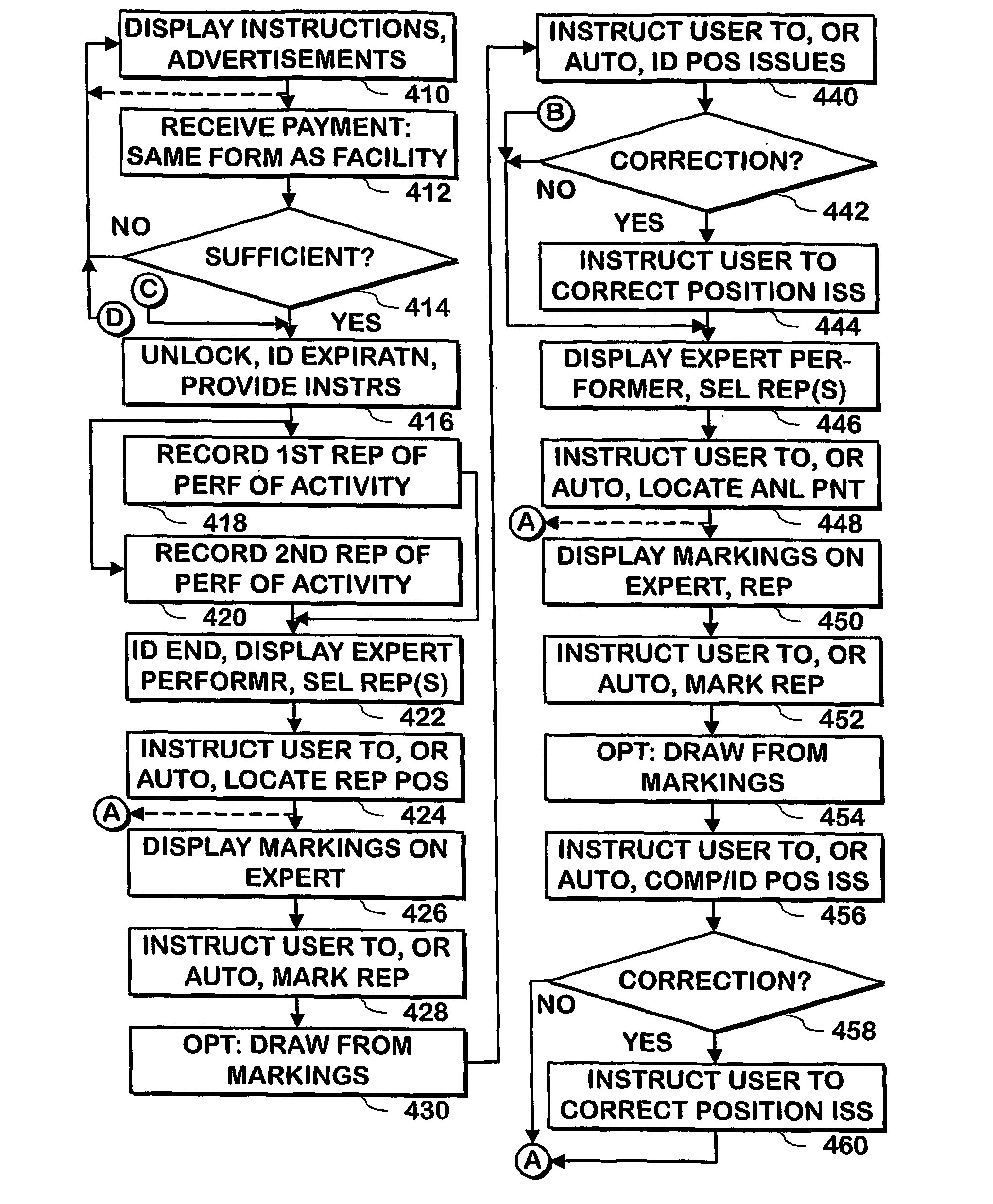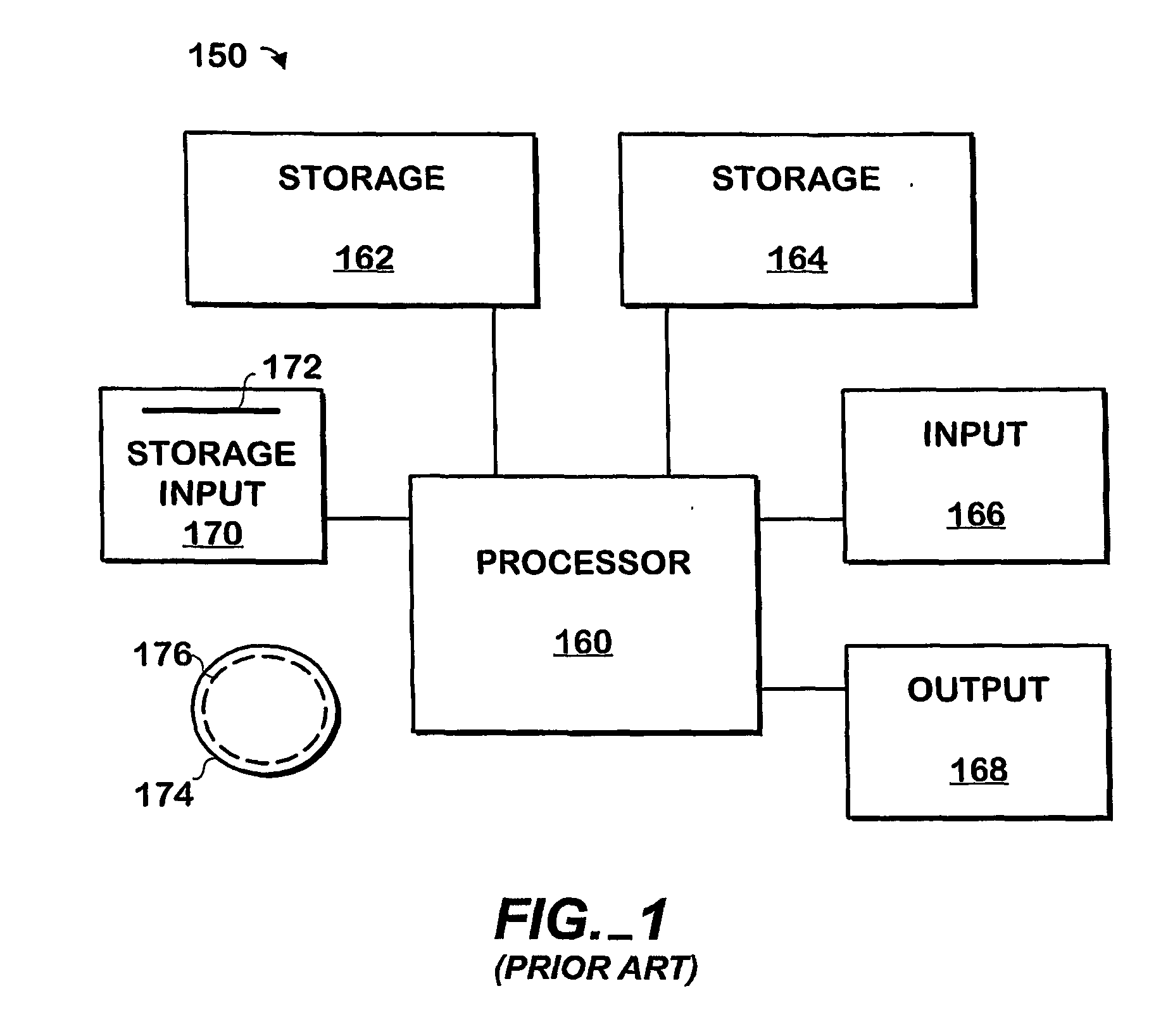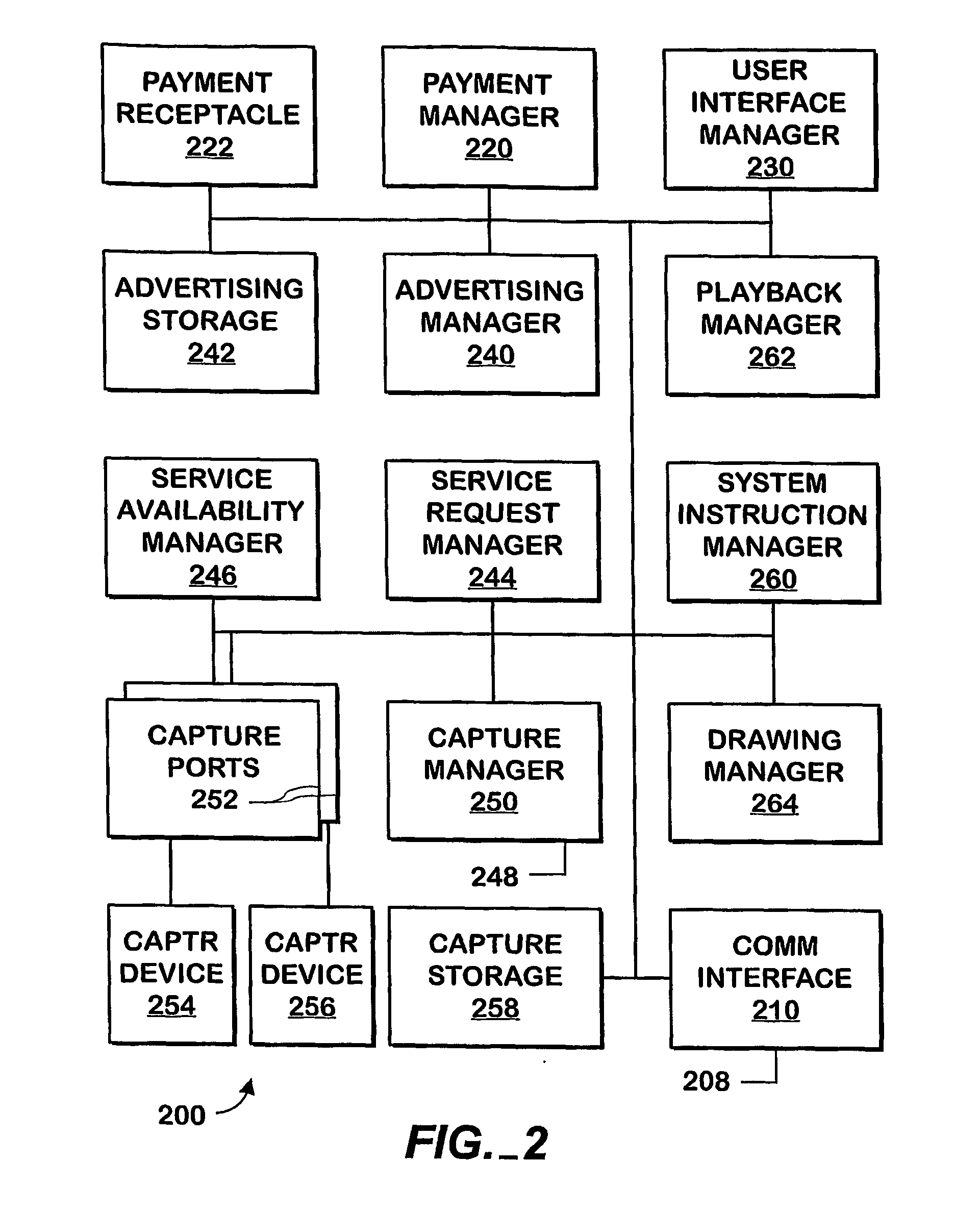Method and apparatus for activity analysis
a technology of activity analysis and computer video system, which is applied in the field of activity analysis by computer video system and software, can solve the problems of insufficient time with the professional or coach, inability to sufficiently improve, and inability to use a professional, coach or other similar expert, etc., to achieve the effect of preventing vandalism or theft, facilitating use, and not requiring a long learning curv
- Summary
- Abstract
- Description
- Claims
- Application Information
AI Technical Summary
Benefits of technology
Problems solved by technology
Method used
Image
Examples
Embodiment Construction
[0035] One form of the present invention may be implemented as computer software on a conventional computer system. Referring now to FIG. 1, a conventional computer system 150 for practicing the present invention is shown. Processor 160 retrieves and executes software instructions stored in storage 162 such as memory, which may be Random Access Memory (RAM) and may control other components to perform the present invention. Storage 162 may be used to store program instructions or data or both. Storage 164, such as a computer disk drive or other nonvolatile storage, may provide storage of data or program instructions. In one embodiment, storage 164 provides longer term storage of instructions and data, with storage 162 providing storage for data or instructions that may only be required for a shorter time than that of storage 164. Input device 166 such as a computer keyboard or mouse or both allows user input to the system 150. Output 168, such as a display or printer, allows the syst...
PUM
 Login to View More
Login to View More Abstract
Description
Claims
Application Information
 Login to View More
Login to View More - R&D
- Intellectual Property
- Life Sciences
- Materials
- Tech Scout
- Unparalleled Data Quality
- Higher Quality Content
- 60% Fewer Hallucinations
Browse by: Latest US Patents, China's latest patents, Technical Efficacy Thesaurus, Application Domain, Technology Topic, Popular Technical Reports.
© 2025 PatSnap. All rights reserved.Legal|Privacy policy|Modern Slavery Act Transparency Statement|Sitemap|About US| Contact US: help@patsnap.com



